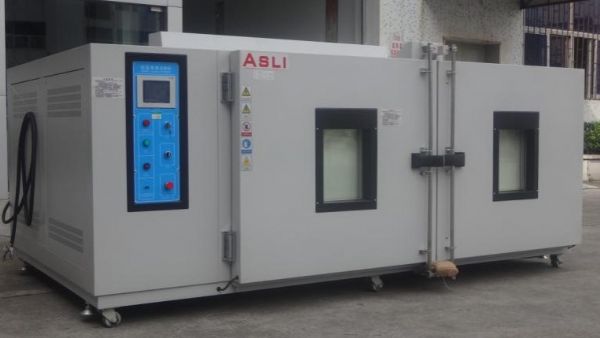Constant temperature and humidity test chamber controls temperature and humidity principle
A constant temperature and humidity test chamber is designed to simulate specific environmental conditions, allowing users to evaluate a product's resistance to high temperatures, low temperatures, and humidity. These chambers are equipped with multiple functions, including heating, cooling, humidifying, and dehumidifying, making them essential tools in quality control and product testing. The heating system within the constant temperature and humidity chamber plays a crucial role in maintaining the desired environment. When the controller detects the need for heating, it sends a signal to the relay, typically 3-12 volts DC, which activates the solid-state relay. This action connects the AC circuit, causing the contactor to engage and apply voltage to the heater. The heat generated is then circulated throughout the chamber by a fan, quickly raising the internal temperature to the set point. The controller regulates the temperature by turning the solid-state relay on and off, and users can monitor the heating output on the machine’s display screen. For temperatures above 89°C, this method works effectively, but for lower temperatures, a balance between heating and refrigeration is required. The system uses the solid-state relay for heating and the compressor-based refrigeration cycle to maintain stability. Cooling is a vital component of the constant temperature and humidity machine, directly affecting its overall performance. The cooling system consists of four main parts: the compressor, condenser, expansion valve, and evaporator. The compressor acts as the heart of the system, drawing in low-temperature, low-pressure gas and compressing it into high-temperature, high-pressure gas. This gas then releases heat through the condenser, turning into a liquid. The cooled liquid passes through the expansion valve, reducing its pressure, and enters the evaporator, where it absorbs heat from the surrounding air, turning back into a gas. This continuous cycle ensures effective cooling and maintains the desired temperature inside the chamber. The humidification system operates similarly to the heating system, using a heater to convert water into steam, which is then released into the chamber to increase humidity. Meanwhile, the dehumidification process relies on the refrigeration system. The evaporator, located inside the chamber, becomes cold, causing moisture in the air to condense into liquid. This process removes excess humidity, ensuring a stable and controlled environment within the test chamber. At ASLI, our commitment to customers is simple yet powerful: "To provide customers with the most satisfactory service." This promise drives everything we do, ensuring that every product and support we offer meets the highest standards of quality and reliability. Dining Room Furniture,Black Dining Cabinet,Narrow Sideboard Cabinet,Tall Dining Cabinets Wuxi Baiyu Pharmaceutical Equipment Manufacturing Co., Ltd , https://www.assembledcabinet.com